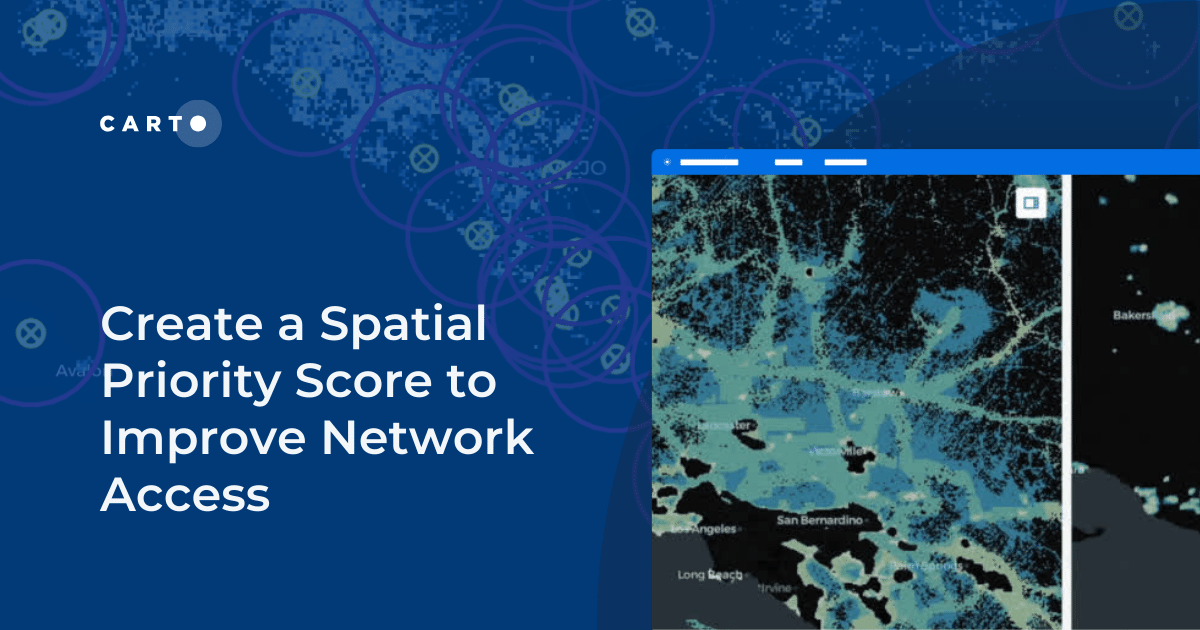Speed up your spatial analysis with CARTOframes 1.0

Spatial analytics is gaining increasing interest from organizations across different sectors as they discover the power of spatial data and analysis to solve their business problems. For example multibillion-dollar industries such as Private Equity and Retail are tapping into spatial analytics to gain an edge.
In their quest for deeper insights organizations are making the shift from $$where$$ to $$why$$—seeing where an event happens in a certain place on a map is very different to understanding why it happens there and deriving actionable insights to inform business decisions. To unlock these insights Data Scientists need to work with spatial models and use Spatial Data Science techniques.
However the demand for Data Scientists that understand geospatial clearly outweighs supply: from 3 million Data Scientists worldwide (using Jupyter and R notebooks) only about 1% are Spatial Data Scientists. Our goal at CARTO is to turn this trend around by championing the importance of spatial analytics with the goal to bring more Data Scientists into spatial and to make the existing pool of Spatial Data Scientists more productive by automating lengthy tedious parts of their work.
That’s why we’re excited to announce that CARTOframes 1.0 is here to speed up your spatial analysis.
Introducing CARTOframes 1.0
CARTOframes is a Python library that enables Data Scientists and Analysts to integrate CARTO maps data and analysis into their Data Science workflows. Created by Data Scientists for Data Scientists it’s the go-to tool for those looking to power their analysis with spatial insights and become more efficient in working with spatial data and spatial models.
CARTOframes is Open Source and it has been built around the OS community to guarantee the best compatibility with the currently available stack for Data Scientists (SciPy and GeoPandas). During the design of the library we’ve worked together with the main developers of these libraries to make sure CARTOframes integration is the best possible.
Data Scientists spend around 80% of their time gathering and cleaning data. Such a lengthy process is not only tedious and wasteful but it also increases the odds of making costly mistakes that can put the validity of an entire model at risk. CARTOframes reduces this time by integrating with Data Observatory a repository of public and premium spatial data.
With this version of CARTOframes you’ll be able to:
- Perform end-to-end analysis straight from your Python notebooks and share the output from your current work environment - no more context switching
- Take your analysis to the next level and increase the accuracy of your models by bringing in new data sources that will augment your own data with spatial insights
- Save valuable time in data gathering and cleaning with a streamlined data discovery and enrichment process
End-to-end spatial analysis workflows
1. Visualize your data
Bring beautiful maps to your notebooks and quickly visualize data locally or from your CARTO account on the cloud. With the best cartography out-of-the-box you can quickly build stunning visualizations using custom basemaps several data layers different layouts legends pop-ups and widgets—no need to be a mapping expert.
2. Get your data ready for analysis
Sometimes your data can’t be plotted in a map straight away. Convert plain text addresses to geometries that can be represented in a map using geocoding services with just one line of code.
You can also calculate areas of influence - creating distance and travel time buffers using isoline functions - quickly visualizing spatial relationships and understanding the context of your data.
3. Enrich your data with best-in-class data streams
Once you have a sense of what your data looks like it’s time to augment it with new relevant data sources to increase your model’s predictive power. From your notebook you can access Data Observatory our spatial data repository where you can find new data streams (e.g. human mobility demographics) relevant to your own data and analysis.
Data Observatory offers 3500+ public and premium datasets and we’re regularly including new ones. All public datasets are directly available to you once you have access to Data Observatory.
Data Observatory streamlines the whole process to gather and consume new data -- you can see statistics about a dataset right in your notebook so that you can explore the data before buying it and request premium datasets from your current work environment.
Once you have the data you need you can easily enrich points and polygons and go straight to your usual analysis or do spatial analyses such as joining data or intersections thanks to the integration to CARTO’s database PostGIS.
4. Get your results and share them with the world
CARTOframes allows you to create and publish web apps with your data directly from your Python notebook.
Once you’re done with your analysis make the output easy to consume by others in your organization by adding widgets such as histograms categories animations or time series. Then simply publish it to get a shareable link.
Want to level up your analysis with CARTOframes? Get started now!
















